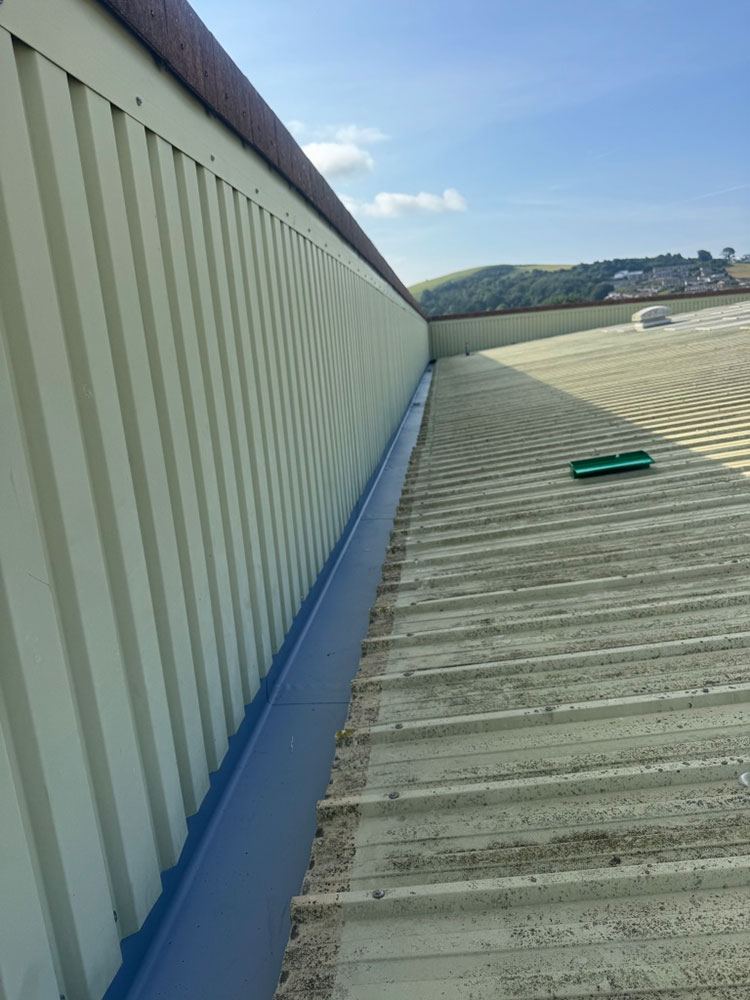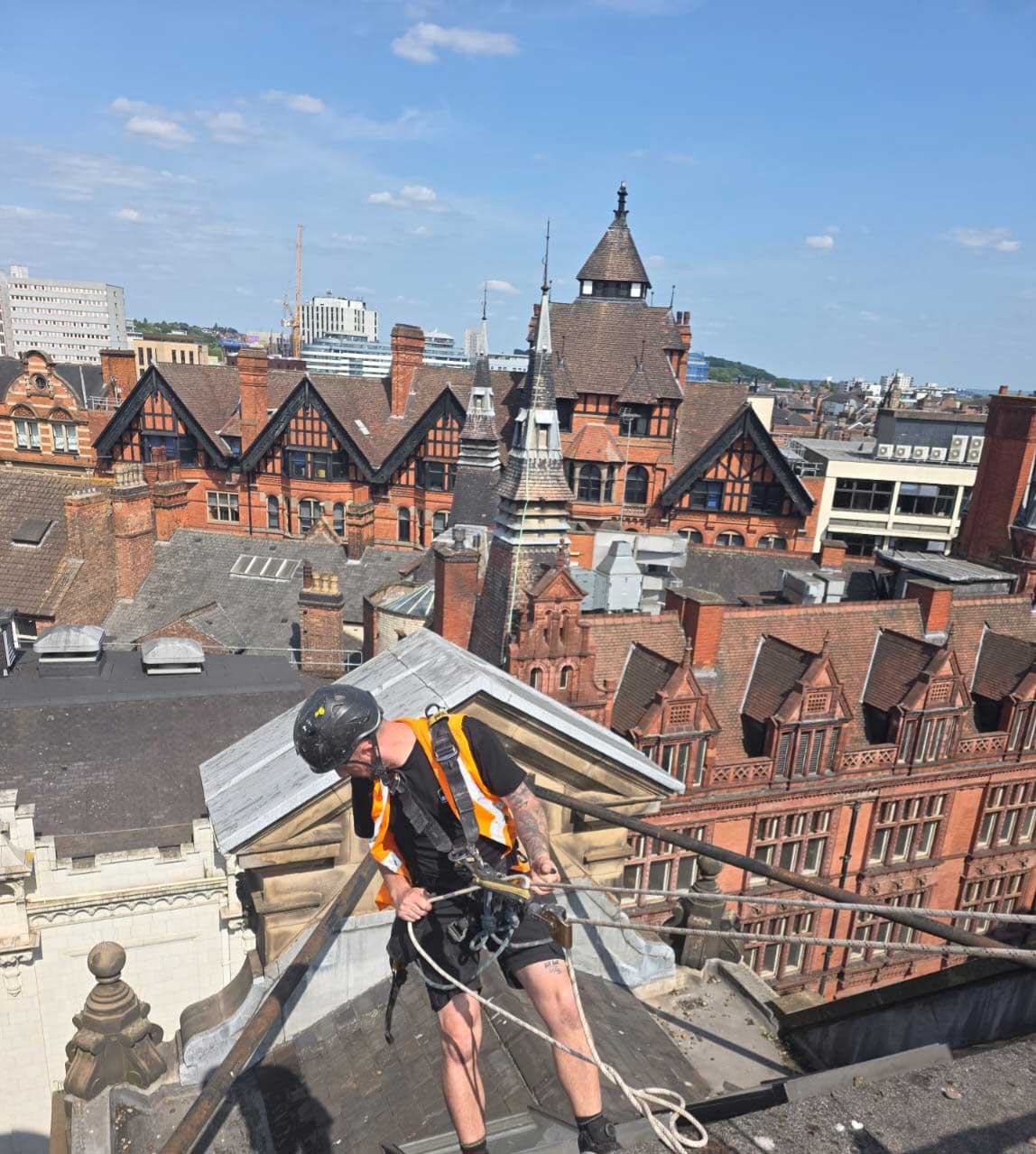
In today’s climate of rising energy costs and increasing environmental awareness, building owners and facility managers are constantly searching for effective ways to reduce operational expenses while improving sustainability. One of the most impactful yet often overlooked solutions lies directly overhead: reflective roofing systems. These innovative roofing technologies can dramatically cut cooling costs while extending roof lifespan and reducing environmental impact.
Understanding the Science Behind Reflective Roofing
Reflective roofing systems, also known as “cool roofs,” work on two fundamental principles that directly impact your building’s thermal performance:
Solar Reflectance (SR)
Solar reflectance measures how eIn today’s climate of rising energy costs and increasing environmental awareness, building owners and facility managers are constantly searching for effective ways to reduce operational expenses while improving sustainabilityffectively a roofing material bounces sunlight away from the building. Expressed as a value between 0 and 1:
- Traditional dark roofs: Typically have SR values of 0.05-0.20, absorbing 80-95% of solar radiation
- Reflective roofing systems: Achieve SR values of 0.65-0.85, reflecting 65-85% of solar radiation
This dramatic difference in reflectivity prevents heat from entering the building envelope in the first place.
Thermal Emittance (TE)
Thermal emittance measures how efficiently a material releases absorbed heat. Like solar reflectance, it’s expressed on a scale from 0 to 1:
- Most roofing materials: Have relatively high TE values (0.80-0.95) regardless of color
- Metals without coatings: May have lower TE values (0.20-0.60)
- Reflective roof coatings: Maintain high TE values (0.85-0.95) while also reflecting sunlight
The combination of high solar reflectance and high thermal emittance creates the optimal “cool roof” effect.
Quantifiable Energy Savings from Reflective Roofing
Research and real-world applications have demonstrated significant cooling cost reductions after implementing reflective roofing systems:
Direct Energy Cost Reduction
Studies by the U.S. Department of Energy and roofing industry organizations have documented:
- Peak cooling demand reduction: 15-30% in single-story buildings
- Annual cooling energy savings: 20-40% in warm climates
- Average payback period: 3-5 years through energy savings alone
Reduced HVAC Equipment Stress
Beyond direct energy savings, reflective roofing delivers HVAC performance benefits:
- Lower peak cooling loads reduce strain on mechanical equipment
- Decreased runtime hours extend equipment lifespan
- Reduced maintenance needs and frequency
- Potential for smaller-capacity replacement equipment when upgrading systems
Many facility managers report 15-25% longer HVAC equipment life after reflective roof installation.
Types of Reflective Roofing Systems
Several different reflective roofing options are available, each with distinct advantages for different building types:
Single-Ply Reflective Membranes
These factory-manufactured sheet membranes offer excellent reflectivity and durability:
- TPO (Thermoplastic Polyolefin): Initial SR values of 0.75-0.85; excellent resistance to UV degradation
- PVC (Polyvinyl Chloride): Initial SR values of 0.70-0.80; superior chemical resistance
- EPDM (white formulation): Initial SR values of 0.75-0.85; exceptional durability and flexibility
Reflective Roof Coatings
Applied as liquid to existing roof surfaces, these systems provide reflectivity and waterproofing:
- Acrylic elastomeric coatings: Initial SR values of 0.70-0.85; cost-effective but require regular reapplication
- Silicone coatings: Initial SR values of 0.65-0.80; superior weathering performance and ponding water resistance
- Aluminum-pigmented coatings: Initial SR values of 0.50-0.60; excellent UV resistance and lower cost
Modified Bitumen and Built-Up Roofing with Reflective Surfacing
Traditional multi-ply systems can be manufactured or modified for reflectivity:
- Factory-applied white mineral surfacing: SR values of 0.50-0.65
- Field-applied reflective coating over traditional surface: SR values of 0.65-0.80
- Cool roof gravel or ballast options: SR values of 0.30-0.50
Metal Roofing with Reflective Finishes
Metal roofing systems can achieve excellent reflectivity with proper coatings:
- PVDF (Kynar) white finishes: Initial SR values of 0.65-0.75; exceptional fade resistance
- Silicon-modified polyester white finishes: Initial SR values of 0.60-0.70; cost-effective option
- Bare metal surfaces: Vary widely in performance; generally not recommended without coatings
Maximizing ROI with Reflective Roofing
To achieve optimal return on your reflective roofing investment, consider these strategic approaches:
Climate-Appropriate Implementation
While reflective roofing provides benefits in most climates, the impact varies:
- Hot, sunny climates (Climate Zones 1-3): Maximum cooling savings of 20-40%
- Mixed climates (Climate Zones 4-5): Moderate cooling savings of 10-20%; minimal heating penalty
- Cold climates (Climate Zones 6-8): Lower cooling savings of 5-15%; potential winter heating penalty
Regional climate conditions should inform your reflective roofing decisions and ROI expectations.
Building-Specific Considerations
Not all buildings benefit equally from reflective roofing:
- Low-insulation buildings: Experience greatest proportional benefit (sometimes 30-50% cooling reduction)
- High internal heat load facilities: See enhanced benefits regardless of climate zone
- Multi-story buildings: Experience diminished impact on lower floors (except top 1-2 floors)
- Buildings with roof-mounted HVAC: Gain efficiency from cooler air intake temperatures
A professional energy analysis can help quantify your specific building’s potential savings.
Maintenance Requirements
To maintain optimal performance over time:
- Regular cleaning: Removes dirt, debris, and biological growth that reduce reflectivity
- Recoating schedules: Typically every 7-10 years for coating systems
- Reflectivity monitoring: Annual measurements to track performance degradation
- Prompt repair of damaged areas: Prevents both thermal and moisture issues
Proper maintenance can preserve 80-90% of initial reflective performance over the roof’s lifespan.
Additional Benefits Beyond Cooling Cost Reduction
While energy savings often drive reflective roofing decisions, several auxiliary benefits enhance the value proposition:
Extended Roof Lifespan
Reflective surfaces significantly impact roof durability:
- Reduced thermal cycling: Lower peak temperatures mean less expansion/contraction stress
- UV protection: Reflective pigments and materials block damaging ultraviolet radiation
- Lower membrane temperatures: Can extend service life by 5-10 years on many systems
Environmental Impact Reduction
Reflective roofing contributes to sustainability goals through:
- Reduced carbon emissions: Lower energy consumption means fewer power plant emissions
- Urban heat island mitigation: Widespread adoption can reduce ambient temperatures 2-5°F in dense areas
- Improved air quality: Reduced cooling demand means less strain on electrical grid during peak periods
- Potential LEED credits: Contributes to sustainable sites and energy efficiency categories
These benefits align with corporate ESG initiatives and municipal climate action plans.
Utility and Tax Incentives
Financial incentives can significantly improve project economics:
- Utility rebates: Many energy providers offerrebates for qualified installations
- Tax incentives: Federal, state, and local programs may provide deductions or credits
- Accelerated depreciation: Potential for energy efficiency tax treatment
- Demand response program eligibility: Reduced peak loads may qualify for additional utility programs
Research available incentives before implementation to maximize financial returns.
Implementation Best Practices
To ensure your reflective roofing system delivers maximum cooling cost reduction:
Professional Assessment and Design
Before implementation:
- Conduct building energy modeling to quantify potential savings
- Evaluate existing roof condition, insulation levels, and structural capacity
- Consider adding insulation during roof replacement to multiply benefits
- Select appropriate system based on building use, climate, and budget constraints
Professional design can optimize reflectivity while ensuring waterproofing integrity.
Quality Installation Considerations
During installation:
- Ensure proper substrate preparation and repair
- Follow manufacturer specifications for application and coverage rates
- Pay special attention to seams, transitions, and penetrations
- Verify final reflectivity values with field measurements
Installation quality directly impacts both energy performance and waterproofing reliability.
Performance Monitoring
After installation:
- Track cooling energy consumption before and after implementation
- Document peak demand reductions during extreme weather
- Monitor interior comfort conditions and thermostat settings
- Calculate actual ROI based on measured performance
Documented results can inform future roofing decisions across your building portfolio.
Conclusion
Reflective roofing systems represent one of the most cost-effective strategies for reducing cooling costs in commercial and industrial buildings. By understanding the science behind these systems, selecting appropriate materials for your specific building and climate, and implementing proper installation and maintenance practices, you can achieve significant energy savings while extending roof lifespan and reducing environmental impact.
As energy costs continue rising and climate concerns grow, reflective roofing offers a proven solution that transforms your building’s first line of defense against solar heat into an active energy-saving asset. Whether through new construction, planned replacement, or retrofit coating applications, reflective roofing technology provides immediate and long-term returns that benefit both your operational budget and the planet.









